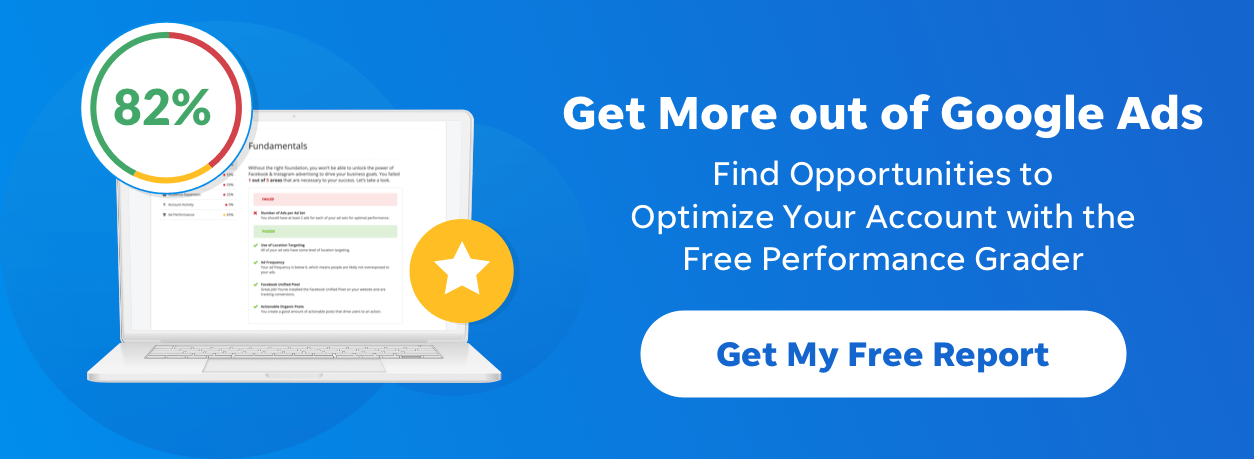
Google’s Mobile Ad Strategy: An Interview with Surojit Chatterjee, Head of Global Mobile Search Ads
The announcement of Google’s new Enhanced Campaigns – coming to an AdWords account near you very soon – made a pretty big splash in the PPC community last week. We think the new campaigns present an exciting opportunity for marketers, especially when it comes to mobile advertising, because the previous system was too time-consuming and complicated. Enhanced Campaigns should make mobile advertising much easier – but a lot of advertisers voiced concern that the shift will reduce control.
Recently, I had the chance to chat with Surojit Chatterjee, the head of global mobile search ads product at Google. Surojit was one of the key product leaders behind the recently released Enhanced Campaigns. In this interview, we discuss the upcoming changes in detail, including what trends and behavior drove the changes, what we can expect from Google’s mobile products in the future, as well as tips and mobile marketing strategies for managing Enhanced Campaigns.
Larry: What’s the driving force behind the new Enhanced Campaigns? What is Google trying to achieve?
Surojit: There’s a mobile revolution going on and a few things have became clear. First, constant connectivity. Mobile, laptop, tablet – I always have three devices I carry around with me. I’m possibly an exception because I work on mobile, but if you look around, everyone has multiple devices, and people are switching between them.
The other thing is that devices are proliferating greatly in terms of form factor and capabilities. You get larger phones (“phablets”) and tablets that connect to keyboards and become a notebook. So the lines are blurring. What’s becoming super important is that people are motivated by their user context.
What that means is that what device people use and what they do on that device depends on where they are, their location and the time of day. Am I at home in the evening? Am I at work at noon? Am I outside, looking for a pizza? User context, like where a person is and at what time, and what they’re doing, is way more important that what device is being used.
So we can no longer tackle this problem by asking advertisers to optimize for every category of device. We have been asking advertisers to optimize for mobile to get good ROI from mobile search, but it’s just not scalable anymore.
How do you see SMB’s benefitting from the changes?
Firstly, we design AdWords as a tool for businesses of all sizes and types, rather than any particular segment.
That said, I think SMB’s will benefit greatly, because it was particularly hard for SMB’s to figure out how to do mobile advertising well – should I split my campaigns this way or that way, for example. What should I do? They don’t have all the resources to do this work as larger advertisers do. So what EC’s give them is a very simple way to advertise across all devices, and the control to show the right ad.
Can you give me an example of this?
I was the lead product manager for click-to-call ads on mobile, and during the beta testing, I worked with my dentist as a beta customer – and he loved it! As a dentist, he got most of his inquiries via phone calls, and the phone was ringing a lot more at his practice. He started getting calls from local users using geo-targeting, and his business was growing. But one of his comments to me was: “This is great but I’m a small business, I don’t have a call center to receive calls on nights and weekends, so I’d rather have those users get sent to my website and fill out a contact form. How do I do that?”
So I explained to him you can do that by splitting up your Google mobile advertising campaigns, having one with dayparting that features phone numbers during office hours, and another without it for nights and weekends. And I could see that this was starting to go beyond him. It’s not that he’s not smart, it’s just that he doesn’t have the time to do this work, and to manage multiple campaigns going forward.
With EC, he can do something very powerful and very simple. He creates one campaign with click-to-call ads, with a click-to-call ad scheduled to run during office hours. It’s that simple. And that makes stuff really simple and easy for SMB’s.
We’ve heard that there are differences in the types of queries being executed on desktop vs. mobile. For example, 1 in 3 mobile searches have local search intent, compared with 1 in 5 for desktop search. What kind of search query differences are you seeing between desktop vs. tablet and tablet vs. mobile search?
We’re seeing context is one important key that drives search behavior. User context drives what people search for, and the actions they take. So for example, say I am at home in the evening, and I’m doing a search. The actions that I will take will be largely the same if I’m using a smartphone, tablet or notebook, because the context is the same. Particularly between notebook and tablet, the query patterns are very similar. Pick any category of keyword search, then pick a specific time of day and location and they’re very similar. The reason is because tablets are used at home, or a stationary location. It’s not a device that’s used when you’re out and about, like on a trip looking for a restaurant.
In terms of advertising we see tablets performing very similar to desktop as well, and that’s due to the fact that tablets often have larger screens and people feel comfortable doing types of commerce actions that they would have otherwise done on a desktop. So between tablet and notebook, we see the user behavior and ad performance as being very similar. Between mobile and tablet/desktop, there are clear differences, which is why we have stuff like mobile preferred ads in EC’s.
If you’re on a mobile device, and you’re on the go, then this is different – we saw this in our data as well. Mobile users are often looking to take action immediately. The time between intent and action is shorter on mobile actions. People will search for something then call immediately, or drive to that store immediately. That’s why they’re searching.
In terms of performance, we’re seeing mobile performing differently because the actions are different. And sometimes it’s harder to measure those actions. Some of our advertisers have figured out ways to measure off-line actions, but most of them haven’t. That’s why we have created specific optimizations for mobile, like mobile preferred ads and extensions, bid adjustments to control your ROI from paid search, etc.
One of the reasons for separating mobile and desktop campaigns was the ability to specify different keywords. Going forward, it’s not possible to target device- or tablet-only campaigns. Is there still a way to target different keywords for mobile and desktop? For example, what if your business use case is selling mobile apps?
First, let me address the mobile apps piece. To be perfectly honest, there’s so much cool stuff in enhanced campaigns, that we weren’t able to elaborate on every feature when we first launched, but what we have done as part of the change is create a new type of ad, the App and Digital Content Ad, and there’s a new ad template for promoting mobile apps. Previously there was no easy way to do this. Now you put a URL to iTunes or Google Play, we’ll figure out if it works on tablet or mobile, then we’ll only show the ads to the right people. So, if you have an iPhone app, we’re not going to show that ad to an Android user or on a tablet if it can’t run on a tablet. We’ll automatically figure it out. We also have better ad formatting than before. Most of the App developer use cases seem to be nicely handled.
That’s just one example, but we’re really focused on looking at specific use cases and how we can help solve them in a way that doesn’t complicate the interface for 99% of advertisers. So we have to strike a balance. I can’t comment right now about future development plans and specific features, but I will say that we are focused on listening to our advertiser feedback. That is what we have done with the app download use case, because we understood that market very well.
Pre-EC, an advertiser could set different max CPC bids for all of the keywords that were targeting mobile search. With Enhanced Campaigns, there appears to be a single desktop-to-mobile bid multiplier for all keywords within a campaign. Do you anticipate giving us the ability to override the mobile bid adjustments and set mobile bids at a keyword level?
There are now three different bid adjustments: Device, Location and Time of Day, all at the campaign level. For a given keyword, there are multiple bid adjustments, and you get to a final bid by multiplying the bid adjustments to the base bid. The reason I’m explaining this is because at a campaign level, I think the math is still doable and understandable. As we go deeper and deeper, the tradeoff is how complex do we want to make this for the majority of advertisers, versus how much control we give.
We are listening to feedback and looking at how people are actually using the product, because we can’t hear from millions of advertisers at the same time. We continue to watch this space closely to figure out what will make things easier. Our current thinking is that having these three levers lets you fine-tune your bids in a pretty granular way, and before jumping into more bid options, we’ll see how our advertisers are using and optimizing with them.
Google is no longer doing behind-the-scenes discounting for mobile ads – advertisers are now asked to set an initial mobile bid multiplier when migrating to the new campaigns. Google will provide a suggested bid multiplier value, which may be up or down. Can you give some additional detail on how Google calculates that value?
We’re looking at two things:
- Traffic Estimator Data – We look at overall auction data to figure out how much more traffic you’ll get as you change your bid, and look for a happy medium there.
- Bidding Patterns – We also look at how similar advertisers have been bidding for a mobile optimized campaign vs. desktop campaigns for similar keywords.
Based on these two factors, we figure out a number that we feel is competitive for you. And the number is purely there as a guide. You have full choice to set the mobile bid multiplier to any number, including minus 100% which would opt you out of mobile.
Do you recommend revisiting the mobile bid multiplier periodically? If so, how often?
You should be looking at it pretty often until you think you have reached your campaign objectives. I would recommend that you follow the initial suggestion, then check back often to see if it’s performing for you. There’s a bit of an averaging effect with the initial bid suggestion – we don’t know precisely what your advertising goals and objectives are, they may be different from other advertisers, so you need to check it, fine-tune it – it’s very similar to bid management guidance on a regular keyword. For any given keyword, we’ll show you bid simulation data, how much traffic you’ll get, how your cost will change, but we let advertisers decide how to bid because everyone has a different objective.
For the average advertiser, look every few days or once a week. Some of the most sophisticated advertisers might check every hour. Try to iterate until you reach your goal, and even then, check periodically. As we gather more data we’ll publish more best practices around setting mobile bid adjustments.
Does Google have any data to share on the performance of mobile optimized campaigns using call extensions and other best practices vs. non-optimized desktop ads?
When an advertiser uses click-to-call ads with call extensions and location extensions, we see an average CTR increase of 6-8%. In general, we see calls doing really well on mobile; right now we’re doing more than 27 million calls per month.
Will Google’s new mobile call conversion type (where you specify a conversion based on length of call) be compatible with Google’s bid management functions, like Conversion Optimizer and enhanced CPC bidding?
At this point, the new conversion data isn’t being used by Conversion Optimizer and auto-bidding tools. We are of course working on this but I have nothing to announce right now.
Regarding call reporting, it’s great to be able to run a report to see what numbers called and the call duration, and thanks for getting rid of the $1 fee! Do you anticipate building out any additional reporting features? Like say, call recording?
We’re working hard to make this as robust as possible in terms of reporting capabilities. We brought in the power of Google Voice in the US, UK, Canada, and many other countries – but it’s a very challenging project. It requires compatibility with phone services, and every country has different telephony laws, so we have a lot of complexity and we need to make it super simple for our advertisers. My vision was to make it so simple, that an advertiser could create a click-to-call ad, then automatically you get all the tracking which looks just like a phone bill. For every call the business got, we tell you the duration of the call, when the call happened, when it ended, and all of that. It’s a very powerful report and as you can see we’re trying to give the best visibility that we can, period. This is not a really easy thing to do, it took a ton of time and investment to come this far, and we’ll continue to work on it.
In 2011, the Quality Score algorithm was updated to take into consideration having a mobile optimized landing page. Yet last month, Larry Page said in the Q4 earnings call:
I’m amazed by Chrome on my Android phone … Chrome is just an amazing experience. So, using my Nexus phone or other smartphones from the latest generation, those phones are almost like using a desktop of last year or something like that…. We don’t necessarily want [advertisers] to have mobile sites [because] some are too simple and I find I get kind of frustrated on my phone sometimes when I have these mobile-specific sites because I am using a modern Nexus 4 that can actually view up the full site and I just find it confusing… So, I think as an industry, we need to improve these experiences and that will take a bit of time, but I’d almost say that we should be designing for the kind of mobile phones that we have now, and that those experiences should work on all devices.
Is it still considered a best practice to create mobile optimized landing pages? If so, what does that look like?
We encourage businesses to create responsive design sites: This means you have one site that adjusts appropriately and renders correctly for the right device. That said, we support a variety of architectures for mobile sites, like a mobile-specific site, and encourage every business to figure out what the best approach is for them.
I think Larry Page’s comment is that he wants a site to work on every device. The devices need to get better and better. That’s what Google has been advancing with Android and Chrome – we really want to make the Web better. Users shouldn’t have to remember different addresses for a business, like .mobi, etc. Ideally everything should just work regardless of what device is being used. His vision is aligned with where we’d like the industry to go: we want browsers and devices to be more powerful/capable, and for advertisers/publishers to adopt a way of designing their websites such that it works on different devices.
We realize that we won’t get here tomorrow. It will take time for all users to have powerful enough devices and for businesses/publishers to roll out responsive sites, but at the same time we don’t want people to dumb down their sites. It’s not enough to build a mobile site at a surface level. I talked to a big business in the travel industry, and they built a mobile site that didn’t work as well as their desktop site, and the problem was that they had dumbed down the site. You can’t expect a site that has no information to do as well as one that has lots of information. It’s more about laying out the information differently, with the understanding that people don’t have a precise mouse pointer at their fingertips. Make the website touch-friendly, and figure out what information is more relevant to the mobile visitor. Like phone numbers and directions – make that information available so they can act quickly. It doesn’t mean remove the other useful information, it may be more about positioning content.
I find EC to be one of the most significant changes to AdWords in the last five years. As the founder of a startup, I’ve witnessed – and driven – some pretty profound reinventions of our product stack. Our software today looks very different from when I first approached investors. Do Enhanced Campaigns constitute a complete re-envisioning of the way AdWords campaign management works?
The world was very different when we created AdWords more than 10 years ago. If we were to have developed AdWords today, we would have done it very differently. And this is exactly what we have done with Enhanced Campaigns – we are thinking about users and their context, and the actions people take depending on where they are and when. That’s what EC’s are about. So what we are trying to do is give our advertisers a set of powerful tools and make it really really simple to reach all users on all devices at all times. At the same time we want to give advertisers the ability to customize their ad text for mobile and adjust how much they spend depending on user context, without needing to split campaigns and do very specific, manual, per-device optimizations and tweaks.
So the summary of this is that EC is really making AdWords ready for the new world where we see this huge proliferation of devices. I see a future where every imaginable device will be connected to the internet, your TV, your watch, everything – they’ll all interact with each other, and a user will switch from one device to another. This is a huge opportunity for our advertisers to connect with the right users at the right time with the right message!
Hit me up on Twitter:
More Articles Like This
Comments
Please read our Comment Policy before commenting.









